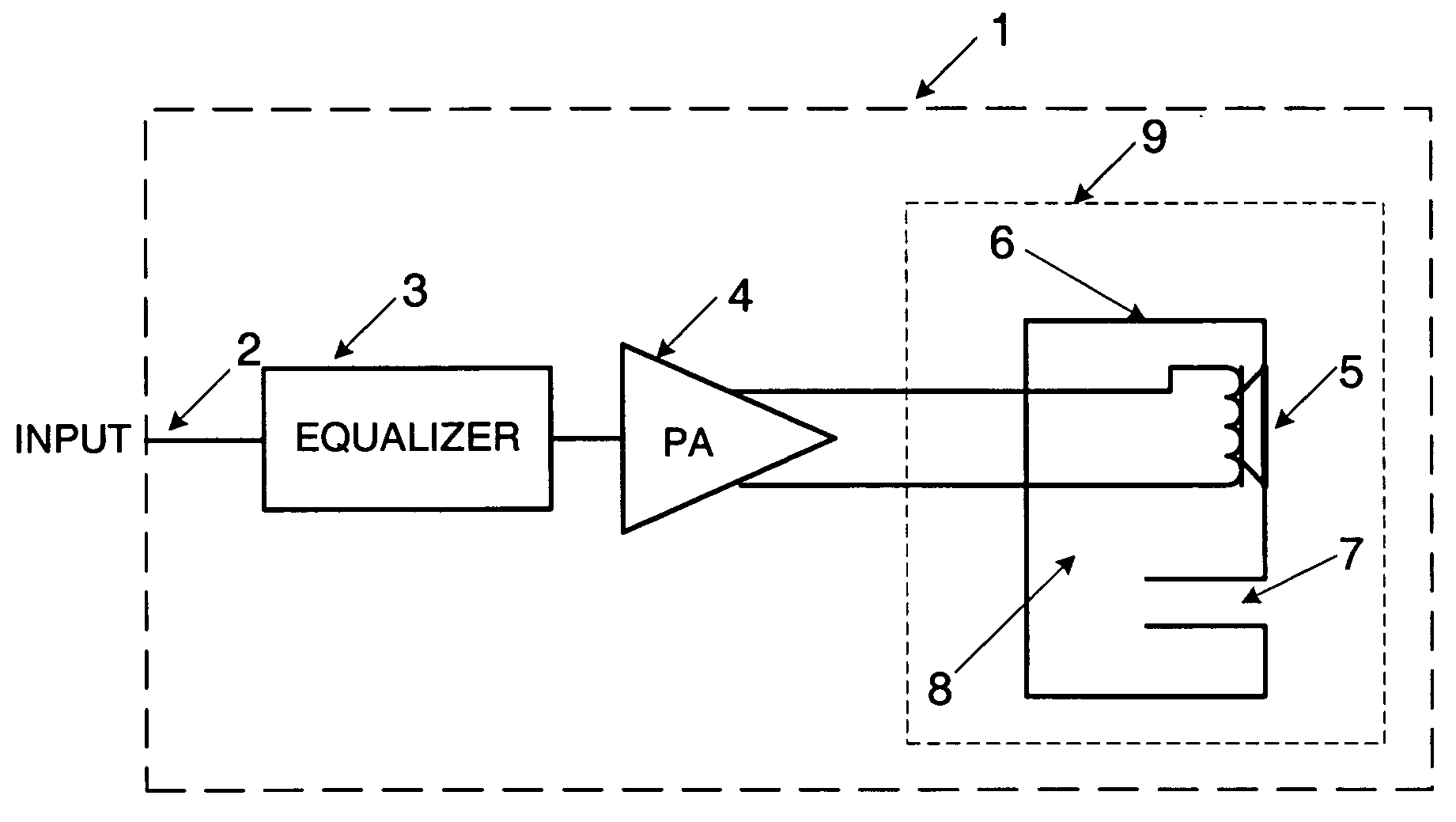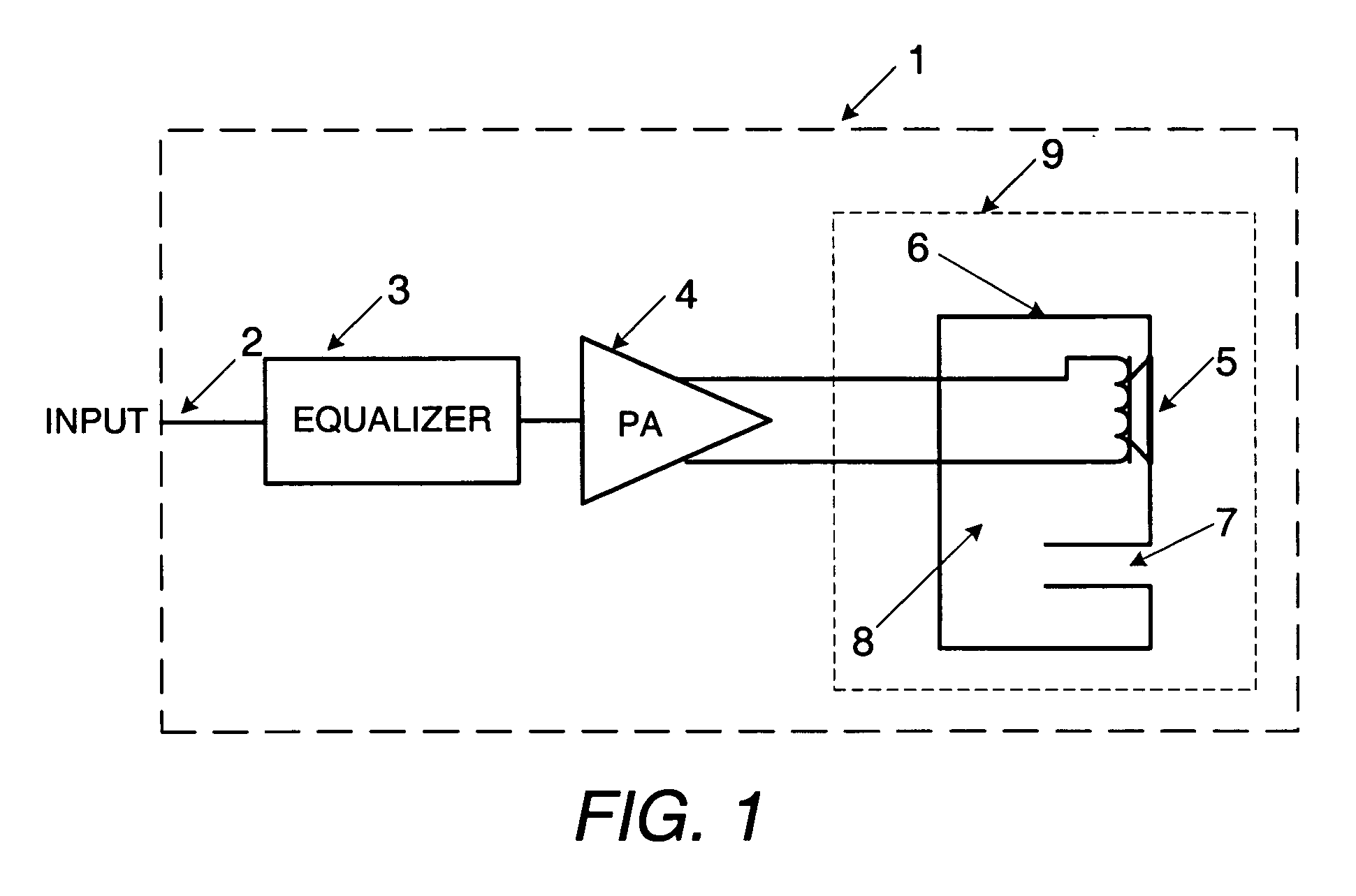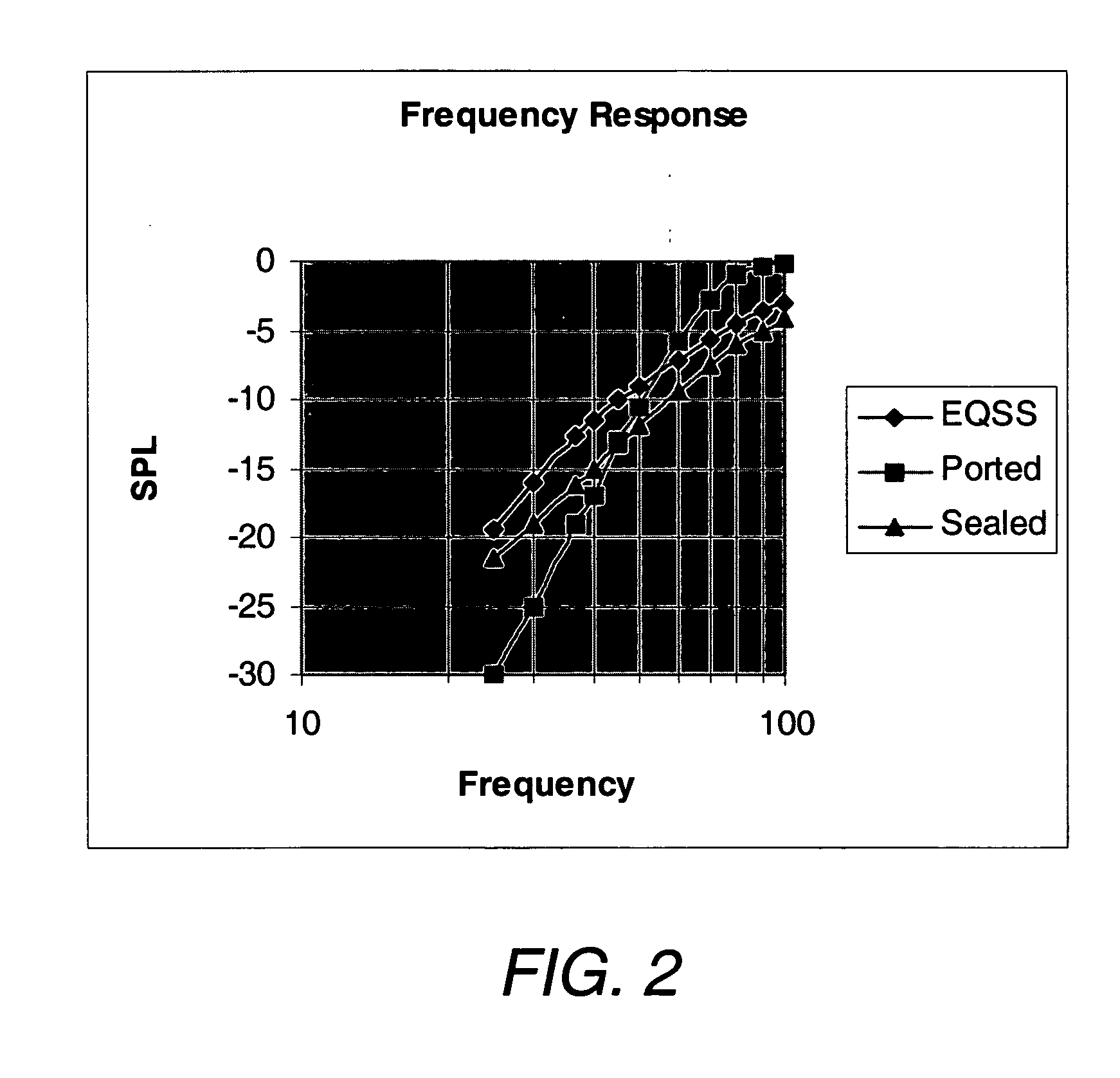System and method for achieving extended low-frequency response in a loudspeaker system
a loudspeaker and low-frequency response technology, applied in the direction of frequency response correction, volume compression/expansion, electrical transducers, etc., can solve the problems of not increasing low-frequency elspl, reducing electro-acoustic efficiency, and difficult to achieve high-output sound pressure levels (spl) at these same low frequencies, so as to achieve extended low-frequency response and spl capability, the effect of greatly improving the low-frequency spl capability
- Summary
- Abstract
- Description
- Claims
- Application Information
AI Technical Summary
Benefits of technology
Problems solved by technology
Method used
Image
Examples
Embodiment Construction
[0029] Referring now to the drawings, wherein like numerals indicate like elements,
[0030]FIG. 1 depicts a block diagram 1 of a loudspeaker system employing the EQSS method and apparatus. For purposes of illustration, and without any narrowing of the intended scope of the invention, component values are provided in some cases. FIG. 1 is a block diagram showing an EQSS system 1 comprising an input signal 2 driving an equalizer 3, which drives an amplifier 4, which in turn drives a loudspeaker driver 5 that is housed in a box 6 that includes a port 7, and a box tuning frequency 8. For reasons that will become apparent hereinbelow, the driver 5, box 6, port 7 and tuning frequency 8 comprise what will be hereinafter referred to as a Quasi Sealed System (QSS) 9.
[0031]FIG. 2 illustrates the frequency responses of three different speaker systems, all without equalization. The vertical axis indicates relative sound pressure level (SPL), while the horizontal axis indicates frequency in Hert...
PUM
 Login to View More
Login to View More Abstract
Description
Claims
Application Information
 Login to View More
Login to View More - R&D
- Intellectual Property
- Life Sciences
- Materials
- Tech Scout
- Unparalleled Data Quality
- Higher Quality Content
- 60% Fewer Hallucinations
Browse by: Latest US Patents, China's latest patents, Technical Efficacy Thesaurus, Application Domain, Technology Topic, Popular Technical Reports.
© 2025 PatSnap. All rights reserved.Legal|Privacy policy|Modern Slavery Act Transparency Statement|Sitemap|About US| Contact US: help@patsnap.com



